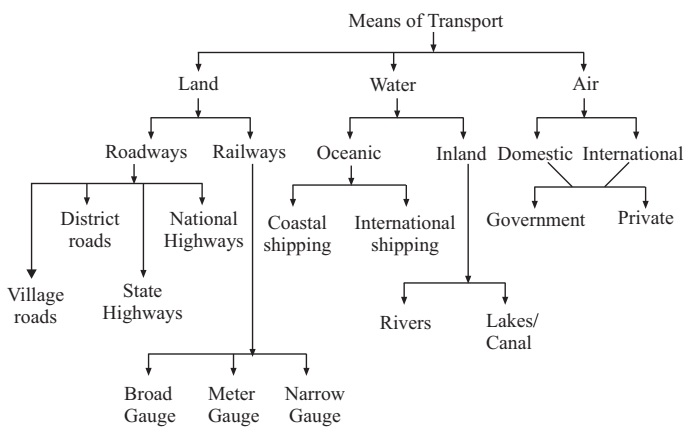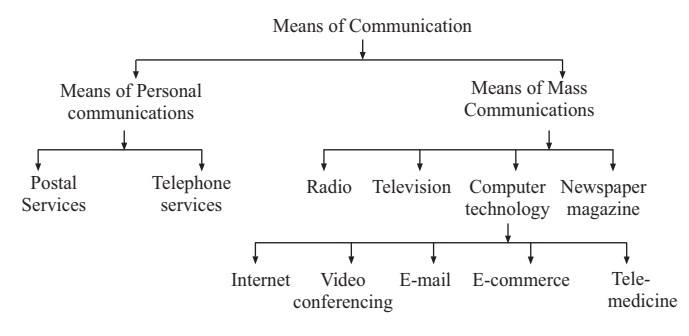Transport and Communication
GeographyTransport and Communication is the life line of the country. The major role of transport is to facilitate trade and commerce by carrying goods, movement of people from one place to another. The communication keeps on updating information about the world's events. It helps in establishing the social, cultural and economic relationships.
The term infrastructure denote the essential elements forming the bases of a system or structure. Transport, communication and trade are important infrastructural resources of economy. These services provide support for the development of entire economy, particularly agriculture and industries.
Modes of Transport
Railways, roads and pipe lines are the means of land transport. They play an important role in strengthening the national unity. They also promote social and economic prosperity in the country. Water transport is an inexpensive but slow means of transport. The development of inland water transport is limited only to the eastern part and eastern coastal plains.
The air transport is the fastest through costliest means of transport. It is also suitable in the areas where construction and maintenance of surface transport is difficult, such as Northeastern region. All these means of transport have brought the world closer.
Rail transport provides services particularly for long distance and carries bulk of traffic at one time. Northern plains, eastern coastal plains, and Gujarat plains have dense network of railways; while the Northeastern region, Western Rajasthan and the Himalayan region have sparse railway network. Road transport provides door to door services. It is flexible and is suitable for short distances. Punjab, Kerala and Tamil Nadu have the highest density of surfaced roads.

Major Super National Highways
- Golden Quadrilateral - Connects Delhi, Mumbai, Chennai and Kolkata
- North-South Corridor- Links Srinagar to Kanyakumari
- East-West Corridor- Joins from Silchar to Porbander
National Waterways
Inland Waterways Authority of India has identify three National Waterways:
- NW1 - River Ganga from Allahabad (U.P) to Haldia (W.B) (1620 km)
- NW2 - River Brahmaputra from Sadia to Dhubri in Assam (891 km)
- NW3 - From Kollam to Kotapuram stretch of canal in Kerala (205 km)
Development of Railways
- The construction of railways is very difficult and costly in mountainous regions, whereas it can be easily done in areas of flat surface.
- India has dense rail network in the northern plain as compared to desert, hills, dense forest and flood prone areas.
- In the industrial regions and mining areas, the railways network is more developed than the less industrially development areas.
- Regions which are densely populated, are well connected with rail networks.
- Urban areas or metropolis have high density of railway network due to employment, business, education, trade and banking.
Oceanic Waterways
India is surrounded on three sides by the Arabian Sea, Bay of Bengal and Indian Ocean with a coastline of 7516 km. Indian sea waterways have two types:
Coastal Shipping: The coastal shipping plays a great role in transporting passengers and cargo between ports. There are 12 major ports and 189 small and medium size ports.
International Shipping: International Shipping is done from the west coast ports to the U.S.A and Europe and West Asia while from the east coast ports to Malaysia, Indonesia, Australia, China and Japan.
Air Transport
Nowadays air transport is one of the important modes of transportation like land transport. India has been operating both domestic and international airways.
The high cost of travelling or transportation discourages the common man to use. In recent years, the use of air transport has rapidly increased.
Communication
Communication is a system of carrying messages, exchange thoughts, ideas and information and also share your sorrows and pleasures with your family members and friends and society in general. Transport and communication are interrelated and they strengthen and supplement each other.
There are various means of communication like Letters, Radio, T.V, Newspaper, Magazines, Telegram, Fax and E-Mails.
